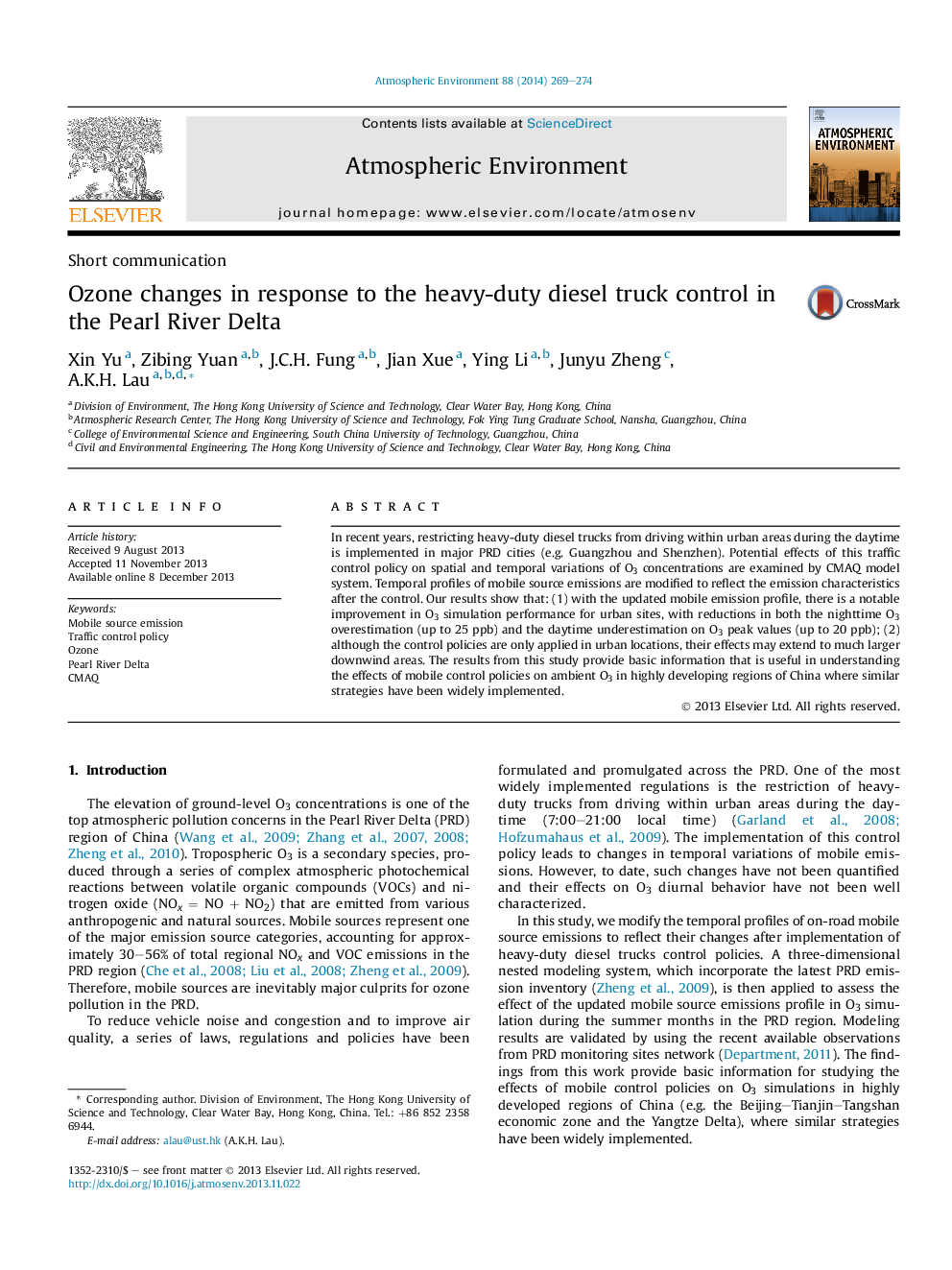| Article ID | Journal | Published Year | Pages | File Type |
|---|---|---|---|---|
| 6340899 | Atmospheric Environment | 2014 | 6 Pages |
Abstract
In recent years, restricting heavy-duty diesel trucks from driving within urban areas during the daytime is implemented in major PRD cities (e.g. Guangzhou and Shenzhen). Potential effects of this traffic control policy on spatial and temporal variations of O3 concentrations are examined by CMAQ model system. Temporal profiles of mobile source emissions are modified to reflect the emission characteristics after the control. Our results show that: (1) with the updated mobile emission profile, there is a notable improvement in O3 simulation performance for urban sites, with reductions in both the nighttime O3 overestimation (up to 25Â ppb) and the daytime underestimation on O3 peak values (up to 20Â ppb); (2) although the control policies are only applied in urban locations, their effects may extend to much larger downwind areas. The results from this study provide basic information that is useful in understanding the effects of mobile control policies on ambient O3 in highly developing regions of China where similar strategies have been widely implemented.
Keywords
Related Topics
Physical Sciences and Engineering
Earth and Planetary Sciences
Atmospheric Science
Authors
Xin Yu, Zibing Yuan, J.C.H. Fung, Jian Xue, Ying Li, Junyu Zheng, A.K.H. Lau,
